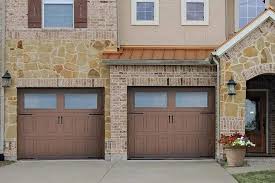To eliminate Garage Door Repair Roanoke TX sensors, you should follow these steps:

- Safety First: Before attempting any modifications or repairs, ensure that the garage door is fully closed and disconnected from power. This will prevent any accidents or injuries during the process.
- Identify the Sensors: Locate the garage door sensors, which are typically installed near the bottom of the tracks on either side of the door. Each sensor consists of a small box or housing with a transmitting and receiving unit.
- Remove Power: Disconnect the power supply to the garage door opener to avoid any electrical mishaps. You can usually unplug it from the outlet or turn off the circuit breaker dedicated to the garage.
- Disconnect Wires: Find the wires connected to the sensors. There should be two wires coming out of each sensor, usually color-coded. Carefully detach these wires from their connections.
- Remove Sensors: Once the wires are disconnected, you can remove the sensors from their brackets or housings. They are usually held in place with screws or brackets that can be loosened and removed.
- Clean up and Restore: After removing the sensors, clean up any debris or dust in the area and ensure that the garage door tracks are clear. If you wish to reinstall the sensors later, keep them in a safe place.
- Reconnect Power: Once you’ve completed the removal of the sensors and ensured everything is tidy, you can restore power to the garage door opener by plugging it back in or turning on the circuit breaker.
Please note that removing Garage Door Repair Roanoke TX sensors may disable safety features and can pose risks. It is recommended to consult the manufacturer’s instructions or seek professional assistance before making any modifications to your garage door system.
Roanoke TX Garage Door Repair
112 US-377 #9, Roanoke, TX 76262, Estados Unidos
817-873-2942




